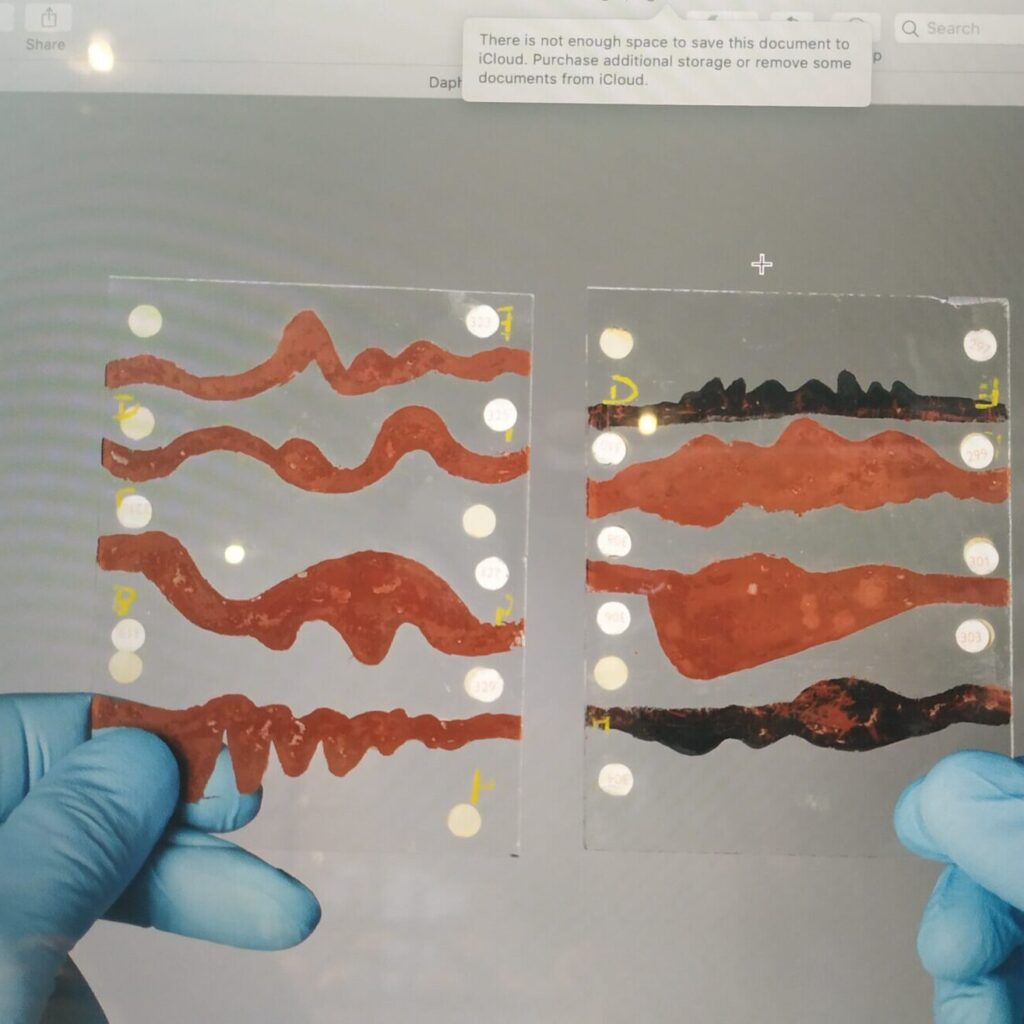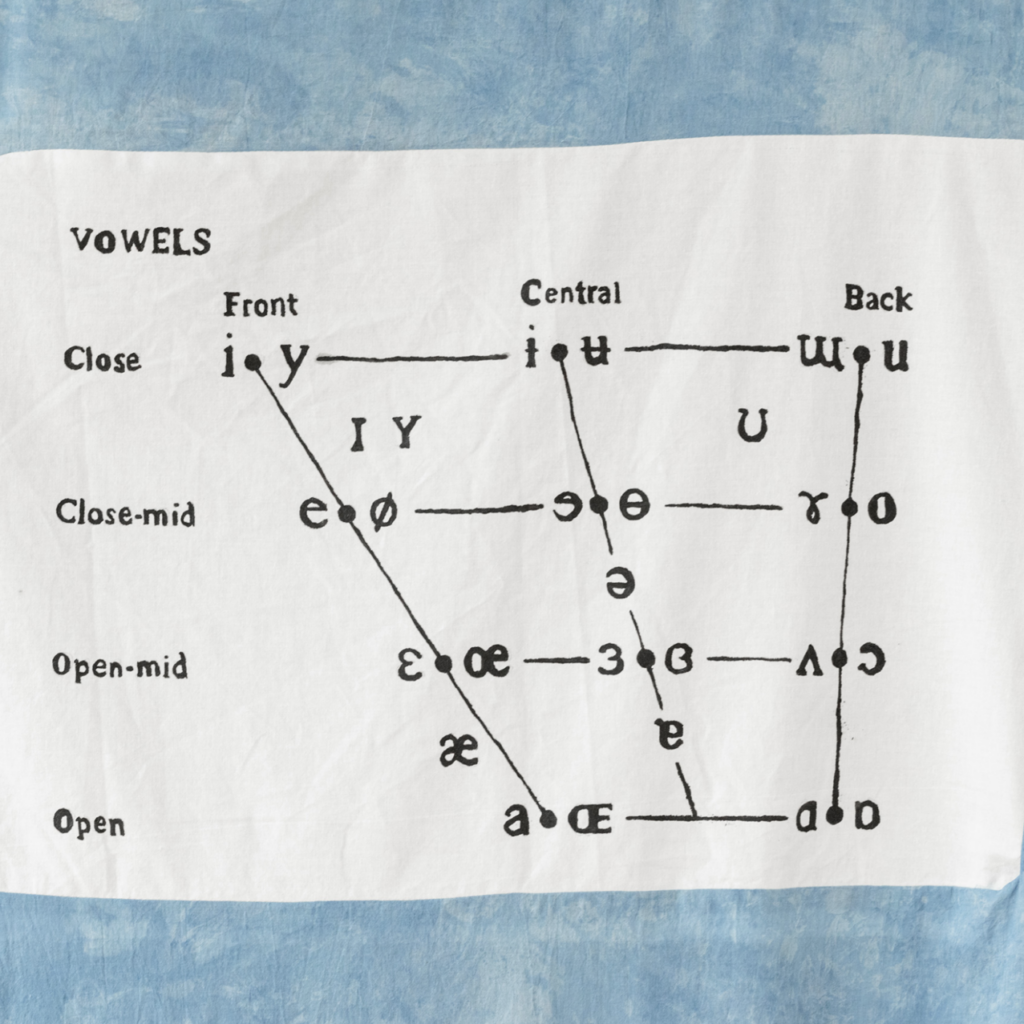SERNÉ, RUNESDATTER & SONG CIRCUS
This project is a collaboration with the artist Ananda Serné (NL/NO). The work refers to soundscapes that aim to enhance sleep quality and simulate ASMR. Slow-wave sleep is the deepest phase of non-REM sleep. The exhibition project slow wave consists of a sound installation and several sculptures in glass, textiles, and metal.
The colors of the textiles are derived from cyanobacteria. Cyanobacteria, or blue-green bacteria, are the simplest organisms we know of that have a circadian rhythm. How does the circadian rhythm of cyanobacteria coexist with the human rhythm? The soundscape is based on water/fluid and onomatopoetics associated with it. The sound sources are positioned in a way that challenges the audience to assume various positions and seating arrangements, thus entering different auditory bubbles, while the different spaces interact. The glassworks refer to Daphne Oram’s electronic works https://www.daphneoram.org/oramicsmachine/. From the late ’50s, using her Oramics Machine, she translated forms into electronic sound compositions.
The project was first exhibited at Bryne Kunstforening in September and October 2021, receiving excellent reviews from the art critic of Stavanger Aftenblad. Slow wave will take part in the summer exhibition of Fossekleiva Culture Centre, Drammen summer 2025.
«And this is where it gets extra exciting. This cyanobacterium, or blue-green bacterium, is the smallest and simplest of our organisms that also has a circadian rhythm! My inner science nerd delights! Amidst the bed linen, the artist opens up questions such as ‘how does the human circadian rhythm interact with the cyano-organism?’
‘A four-channel sound installation sends the sound of dripping liquid across the room. The unexpected sound makes the hairs on the back of the neck stand up, sending waves of shivers through the skin. The sound is barely audible, yet it feels uncomfortably close, even intrusive.
Then it happens that I discover that the sounds I hear do not come from running water. There is no leaking faucet, no melting icicle, or drops from an overflowing gutter inside. Sound-painting words, or, if one remembers from elementary school learning; onomatopoeias, blend with more organic sounds, as a clearly pronounced ‘Splash’ and ‘Drip’ reveal that the sounds we hear are human-made.
Serné plays with questions about whether it is possible, through movement and sound, to achieve a form of communication between different organisms.» Aftenbladet, 23.09.21″









